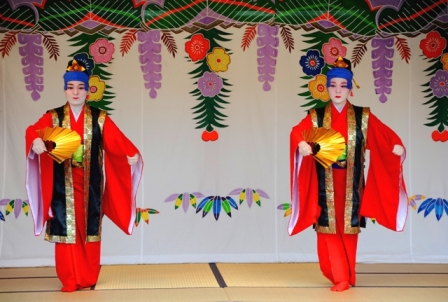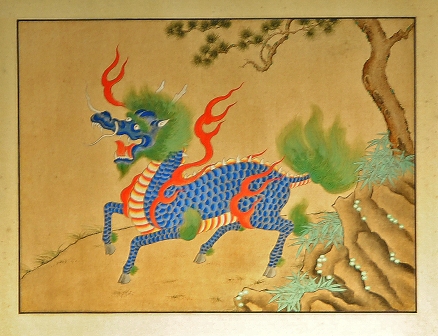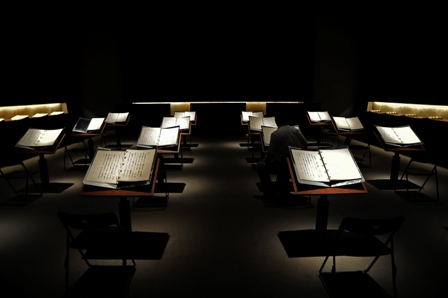
America imports oil from Saudi Arabia, cars from Japan, wine from France, shrimp from Viet Nam, coffee from Costa Rica, jalapeños from Mexico, and even toothpicks from China. We have perfected consumption, and the world feeds our insatiable appetite for stuff.
In return, America exports pop culture. No matter where you might wander, blithely expecting to be swallowed in a culture unlike your own, your first meal likely will be accompanied by the viral voices of Michael Jackson or Lady Gaga.
A couple of years ago I traveled with a group organized by Jerry Adelmann of Openlands to work in three World Heritage Sites in southern Yunnan. This is end-of-the-road China, hugging the border with Burma. Enjoying an evening in a pizza joint in the walled city of Dali, we were circled by young Chinese who could have effortlessly blended in New York, Paris, or Tokyo. Fast food, rap music, IPods, cell phones, and reality TV will be our legacy, I suppose.
You can no more escape American culture in Japan than you can in America. A few minutes ago we arrived in Nagasaki, and while walking through the train station we were met by American pop music blasting from every pore in this city. Consider the irony for a moment. We are in Nagasaki, for God’s sake, and our Japanese hosts effortlessly embrace an Americanized culture.
Please don’t mistake these observations for cheap America bashing. I have seen more of America than virtually anyone I know, and my love affair with our country is unquestioned. I am constantly reminded that we also gave the world pragmatic democracy, and that contribution will (hopefully) remain our bequest to future generations such as my granddaughter’s.
I am not referring to the jingoistic democracy that has been imposed through misguided nation-building (or unraveling) in recent years. I mean the democracy that grows organically through our examples of selflessness and good works (consider the Occupation here, for example, or the Marshall Plan in Europe).
Let me offer a case in point. No single issue has haunted America since its founding as has slavery. Slavery is the one irreconcilable impasse that the founders failed to resolve in Philadelphia, passing it on to future generations to address. America invested over 700,000 lives in a Civil War to finally make good on the promise of liberty for all, yet only in my lifetime in the Jim Crow South have our black citizens, our neighbors, been invested with the rights enjoyed by the rest of us from the beginning.
At this moment we are led by a president who is himself an African-American, married to a woman who is the direct descendent of African slaves. According to a recent article in the NY Times, “In 1850, the elderly master of a South Carolina estate took pen in hand and painstakingly divided up his possessions. Among the spinning wheels, scythes, tablecloths and cattle that he bequeathed to his far-flung heirs was a 6-year-old slave girl valued soon afterward at $475.”
“In his will, she is described simply as the “negro girl Melvinia.” After his death, she was torn away from the people and places she knew and shipped to Georgia. While she was still a teenager, a white man would father her first-born son under circumstances lost in the passage of time.”
“Melvinia Shields, the enslaved and illiterate young girl, and the unknown white man who impregnated her are the great-great-great-grandparents of Michelle Obama, the first lady.”
Let that sink in for a moment. Where else in the world would this be possible? Michelle Obama’s grandfather was a postman, and her father worked as a pump worker at the City of Chicago water plant. Barack O’Bama’s paternal grandfather was a Kenyan mission cook and herbalist, and served time in a British prison for being involved in the early African liberation movement (as well as where he was tortured). The president’s father served as a government economist in Kenya.
In contrast, George W. Bush’s grandfather, Prescott Sheldon Bush, served Connecticut in the U.S. Senate from 1952 until January 1963. His father, George H.W. Bush, followed Ronald Reagan as the 41st president of the United States.
A black American president is as likely as a Jew being elected leader of Iran, or an Aboriginal as prime minister of Australia. Yet it did happen in America, and as a peaceful blessing of a stable democracy. I am writing, at this very moment, in Nagasaki, a city utterly obliterated in WW II as the result of a despotic government, led by an emperor thought to be divine, willing to sacrifice the blood of its citizens to the last drop.
Our country, in moments of greatness, finds a way to rise above its limitations, its prejudices, and its hatreds. Of course we have every right to criticize the policies and actions of our presidents. The first amendment to the constitution guarantees that right. In fact, let me remind you of the entire text of the First Amendment:
Congress shall make no law respecting an establishment of religion, or prohibiting the free exercise thereof; or abridging the freedom of speech, or of the press; or the right of the people peaceably to assemble, and to petition the Government for a redress of grievances.
Those who would slander and personally attack our president or his wife because of their ethnicity or color damage our democracy, I believe. The “birthers” who have questioned his citizenship and those who have alluded to his Islamic heritage (which, even if a practicing Muslim, would be his constitutional right as protected by the Establishment Clause of the First Amendment), besmirch the promise of our democracy so needed by much of the world. Of course these people have to right to express themselves under the protections of this same First Amendment, just as I have the right to call them misguided, bigoted fools.

I am ahead of myself, though. On our third day in Okinawa we left the Marriott (talk about American culture) and wandered back south toward Naha in search of this island’s cultural soul. There are several World Heritage Sites on the island that have been restored to honor the Ryukyu past. We first visited Zakimi-jo, one of the citadels built during the Ryukyu era to defend the interests of a local lord. The remnants of the walled fortress offer an unobstructed view across the island, from the East China Sea east to the Pacific. Given Okinawa’s importance to trade between China, Korea, and Japan during the Ryukyu, these elevated vantage points were invariably sites of forts and fortresses such as Zakimi-jo. In the small museum there were several examples of ceramic funereal urns, an important tradition to the Ryukyu. After a period of years the Ryukyu would cleanse the bones of their loved ones, and place them in these urns.
We left 15th Century Ryukyu Japan to beam up to the 21st Century and the Kadena AFB. After the war the U.S. military established several bases on Okinawa, Kadena among them. These bases have been sources of tension here for decades, and the strain still influences politics throughout the country. Many here would like for the U.S. military to leave, or, at least, to consolidate the bases. There are others who are adamant that the U.S. should stay. Every time North Korea lobs another missile across Japan, or another U.S. sailor or soldier commits a crime while off base, the issue flares once again.
We stopped across from the base and climbed to the top of an observation tower to view the base. What fascinated me were the small farms and gardens that locals were cultivating at the base of the sound baffles that border the runway. As I said before, no land goes to waste in Japan. And what about Tommy Lee Jones on the vending machine in the lobby? The boss?
Mr. Iwana next led us to one of his favorite restaurants in the village of Kadena. This soba shop is the archetypal Japanese cubbyhole, with three tables and two additional in the tatami room. The owner/chef specializes in Japanese-style buckwheat noodles made daily. He is also a jazz buff, and one wall of the café houses his impressive collection of vinyl albums. There we slurped our noodles to the music of Coltrane and Monk.
As with so much of Japan, our final destination is significant at multiple levels. Shuri-jo is the finest example of Ryukyu on the island. This extensive castle is still in the process of being restored after being obliterated during WW II. The interpretation in Shiri-jo, sadly, failed to mention precisely why the complex had been destroyed during the Battle of Okinawa.
Underneath the castle, as much as 100 feet below ground, were extensive tunnels and caverns that housed the Japanese military commander, Ushijima, and at least 20,000 of his troops. The American military relentlessly bombarded the Shuri site, with little impact on the Japanese. These caverns today are closed to the public, although there are access points if one knows where to look (such as Mr. Iwama).
We also were treated to a dance performance within the castle grounds. According to my granddaughter, the dance consisted of elements of both traditional Japanese dance as well as that most likely attributable to the Ryukyu. Whatever the genre, I thoroughly enjoyed the slow-motion, expressionless dancers in their splendid costumes.
Next we fly to Fukuoka, and then catch the express train to Nagasaki. We will spend three nights at a famous ryokan, our first chance to relax for more than one night in the same hotel.
Ted
15 Mar 2010
